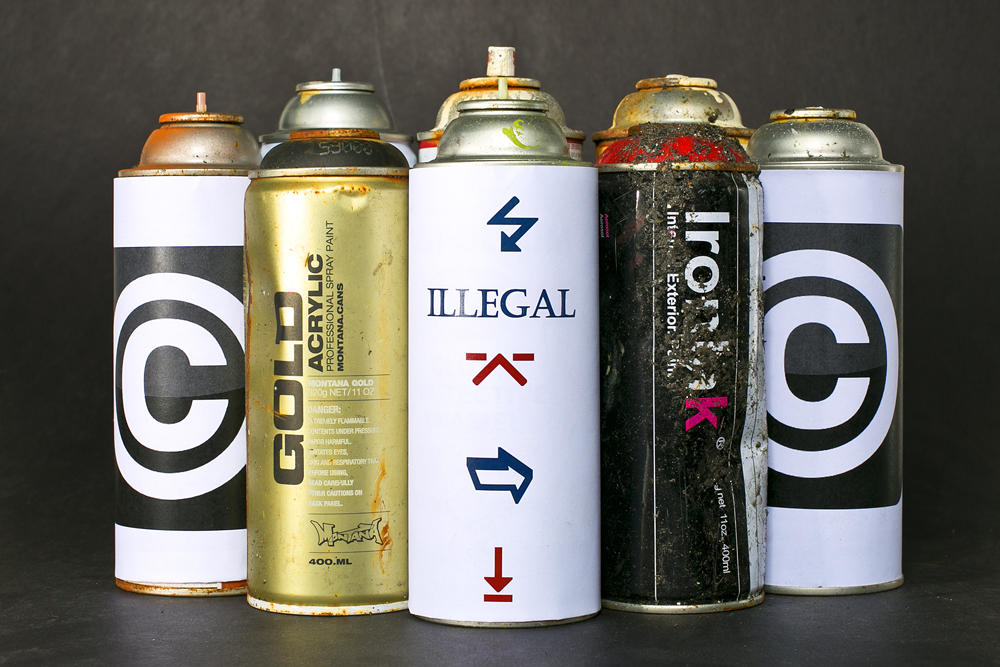Art and artists are like toilets; we all want and need them, and our lives would be disastrous without them. A few of us seriously want to work with artists, learn much about them or have careers involving them. Declaring art as one’s university major conjures up visions of poverty, obscurity and a pointlessly highbrow culture, one that average person neither cares for nor understands.
The rising social acceptance of graffiti, with early giants of the genre including Keith Haring and Jean-Michel Basquiat, presents art consumers with a new genre that is popular among the young and fashionable and has inspired many people to become more interested in art. The popularity of the genre, however, disguises the banal and bland messages it often communicates, the differences in privilege accorded to graffiti artists, and the hypocrisy present in the lifestyles of these artists.
There are a few main reasons why graffiti art is so widespread today. It enjoys associations with products of urban culture such as rap and breakdancing. Many people find a thrill in consuming or participating in graffiti art because it is still somewhat illegal or taboo, and it communicates provocative and perceptive messages about our society.
By far the most successful graffiti artist working today, and one of the world’s most famous living artists, is British artist Banksy. Banksy derives much of his fame from his anonymous and irreverent persona. The mystique surrounding Banksy is partially why so many books, articles, documentaries and exhibits have emerged to understand and consume his work. Banksy’s month-long trip to New York City last year, where he released and sold new works, was another major development for the artist.
Graffiti artists convey contradictory messages in their behavior. They frequently paint on public spaces and claim to uphold the belief that art should be allowed to exist anywhere, yet they cite copyright laws to maintain profits and control over their artwork. Virtually no artist has claimed to allow other artists to paint on objects they own. Graffiti art frequently scorns the conventional art market, with Banksy producing one work entitled “I Can’t Believe You Morons Actually Buy This S—,” yet it still enthusiastically embraces commercialism and every unsavory aspect of dealing art.
While famous graffiti artists are treated as celebrities and trailblazers, idolized by many fans and producers of art, ordinary people who produce graffiti still face punishment for their actions. The success of white graffiti artists, such as Banksy and Haring, stands in sharp contrast to the ostracism and animosity experienced by blacks and Latinos who produce graffiti without any expectation of fame or fortune, and most people seem to have no problem praising famous graffiti artists while arresting obscure ones.
Behind Banksy’s anonymity and the enigma and rebellion of other graffiti artists, there is not much that is innovative or admirable about the genre. Like Bill Watterson and Daft Punk, graffiti artists have realized that it is prudent to remain shrouded in mystery and keep parts of themselves perpetually concealed so that the public will always want to learn more about their lives and work. Closer studies of certain works of graffiti reveal rather unambitious and conservative thoughts. One of Banksy’s most recognizable images shows a man wearing a baseball cap and hood preparing to throw what appears to be a Molotov cocktail but is instead a bouquet of flowers. The implication is that we shouldn’t judge people by appearances, but this moral is painfully cliched and the accolades it has received are disproportionate to its actual value.
While works of graffiti art are supposedly created to make the art community more accessible and egalitarian, graffiti artists, unsurprisingly, are not opposed to selling their works for millions of dollars. They hire lawyers and publicists to prevent theft of their art, and they occupy the same privileged positions they frequently criticize. Over time, every art movement, no matter how avant-garde, becomes conservative and fails to live up to its ideals, ending up as a parody of itself. The same is happening to graffiti art.
It is curiously ironic that while Banksy commonly satirizes police, capitalism, consumerism and a host of other subjects, he neglects to consider that the messages he sends inevitably tend to be predictable and unwilling to really challenge popular opinion. Virtually all of Banksy’s works dovetail with the goals of Occupy Wall Street, the hipster pursuits of Portlandia characters and typical left-wing talking points. It comes as no surprise that Banksy has poked fun at ubiquitous British surveillance cameras, Israel’s human rights abuses and the crimes of corporations; it would certainly be more shocking if Banksy supported more conservative positions. If Banksy were not anonymous and white, it is highly probably that his works would receive far less fanfare, and he would not be held up as a role model and spokesman for art.
Graffiti, as a whole, has yet to shake off its reputation for vandalism and its status as something that only privileged people can really enjoy. While wealthy art patrons can see graffiti in a museum and find it charming, those who live in communities with graffiti, or are punished for making graffiti, enjoy none of the amenities that a few artists have enjoyed. Once again, critics and curators have been excessive in their praise of an art movement and its artists. We will need to wait to see if graffiti art really does have something new to offer to the world.






